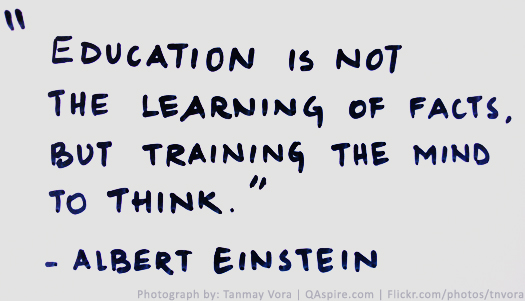Insights and Lessons on Critical Thinking, HR and Leadership Development
Tanmay Vora

In American Management Association’s critical skills survey 2012, respondents emphasized on 4 C’s (Critical thinking and problem solving, Effective Communication, Collaboration and team building and Creativity and innovation) as their key priorities for employee development, talent development and succession planning.
I have been exploring the topic of critical thinking with respect to HR, Talent Acquisition, Leadership Development, Communication and Training via series of posts at Pearson’s TalentLens Blog (@ThinKritical on Twitter). The premise is simple – if we improve how we think, we will improve how we develop people, innovate, solve problems and grow as individuals and organizations.
Here is a round up of all posts (with excerpts) written on this important topic so far.
Why Hiring Critical Thinkers is Absolutely Critical for HR
With people being at the core of an organization’s greatness, it is extremely important for HR professionals to pay attention to two things – that existing people are trained to think critically and people are hired based on their ability to think critically.
– – – – –
Problem Solving in Organizations: A Diamond or a Coin?
Leaders are expected to take right decisions after considering various facets of a given problem – just like an expert jeweler looks at a diamond. Logic looks at problems as a coin with just two sides where as critical thinking is all about looking at the same problem as a diamond with multiple facets.
– – – – –
10 Most Important Traits of a Leader Who Thinks Critically
Ability to think rationally and critically is one of the most important leadership skills and for the leader, thinking objectively is not just a skill, but also an obligation to the people they lead.
– – – – –
Training and Development: 4 Ideas to Build a Culture of Critical Thinking
The reality is that training middle managers on critical thinking skills is much like teaching an adult to ride a bicycle. It takes patience, training and practice to be able to master the art of critical thinking which, in turn, leads to good decision making.
– – – – –
3 Ways Critical Thinking Improves Emotional Quotient of Your Leaders
The fact is that a leader needs a fine balance of emotion and rationality to succeed. They need to connect with their people using emotion and decide what is best for them using rational thought. Critical Thinking is the connecting link between emotions and intelligence.
– – – – –
Critical Thinking – Leaders, Know Thy Biases
Critical thinking is an antidote to cognitive biases. When we think critically, we recognize our own assumptions, evaluate arguments and draw conclusions.
– – – – –
How Critical Thinking Helps in Effective Conflict Resolution
The truth is that conflicts, if managed well, are an opportunity to understand better, get to the root causes, introspect, improve and learn. A well-managed conflict often leads to improved clarity, better relationships and win-win situations.
– – – – –
Creativity and Critical Thinking: Friends, Not Foes!
There is a difference between creative thinking and creativity. Creative thinking is the process of ideation (thinking). Creativity is about bringing that idea to life (execution).
– – – – –
Critical Thinking: The Soul of Effective Communication
If communication is defined as a meaningful exchange of information, thoughts and feelings between two living creatures, critical thinking is the engine that provides this meaning.
– – – – –
BONUS: Don’t miss the guest post “Environment is Everything” written by Mr. Gurprriet Siingh, Director and Head, YSC India, an executive coach, blogger and a social media influencer. His Twitter handle is @JoyandLife.
– – – – –
Stay Tuned! Subscribe via RSS, Connect via Facebook or Follow us on Twitter. You can also subscribe to updates via email using the section at the bottom of the page